After 10 months of travel, we now have the pleasure of reflection, reviewing images, and remembering the experiences that make our work so exciting. We’re catching up on our blog, a project that seems to require more time and focus than what we can typically spare while traveling for work. Following on the heels of our Namibia safari, we want to hop back to last August’s incredible safari in Zambia, Botswana, and South Africa.

Zambezi River at Victoria Falls
Our Botswana & South Africa Photo Safari began with a pre-safari extension to the Victoria Falls region of Zambia. There, the languid flow of the broad Zambezi River takes a thundering drop into a deep chasm. What makes Victoria Falls so impressive, and challenging to describe, is that the river is a mile wide as it plunges across the entire length of this gorge — it’s not pouring into one end of the gorge, but cascading across its mile-long flank. Here the earth has been torn open, instantly swallowing this massive river into a deep slot canyon with one narrow exit. As we view the falls, rather than standing at the bottom looking up, trails lead us along the opposing chasm wall only a few hundred feet away from the upper edges of the long line of falls.
As if ambushed by gravity, the river careens into this gaping fissure, pulling gulps of air with it as more and more water continues hurtling downward. The compacting air and crashing water then explode in rebellious exhalations, but the confines of the canyon force them to escape straight up, funneling skyward in blasting winds and wet clouds of dense mist. These plumes swirl into the air over the falls, conjuring rainbows from the tropical sun, then raining their moisture back upon the earth. From the guts of this great steaming chasm comes a constantly venting roar, giving the falls their local African name, Mosi-oa-tunya, or “The smoke that thunders.”

Local boy at Chief Makuni village, Zambia.

A yellow-billed stork flies along the Chobe River
in Chobe National Park, Botswana.
From miles away, the plume of mist above the falls could still be seen as we visited the local village of Chief Mukuni. Yet while cruising on the river above the falls that afternoon, the powerful flow of water seemed muted as we savored a pleasantly tranquil sunset from a riverboat on the Zambezi.
Beginning our main safari, we all gathered together in Livingstone, and headed to Botswana. We crossed the Zambezi River at the bustling, border ferry at Kazungula, where the boundaries of Zambia, Zimbabwe, Botswana, and Namibia all nuzzle together. From there, a short drive took us into Chobe National Park where game is drawn to the waters of the Chobe River, a tributary of the Zambezi. Our primary interest here was spending afternoons cruising the river by pontoon boat, and watching and photographing hippos, crocodiles, a great variety of waterbirds, and the many thirsty critters that come to the river’s edge to drink. Chief among these are throngs of elephants, great family groups galloping excitedly down the dusty hillsides to reach the cooling waters of the river. It had been a very dry year with little or no rain throughout the safari areas, so the river is key to the animal’s survival.
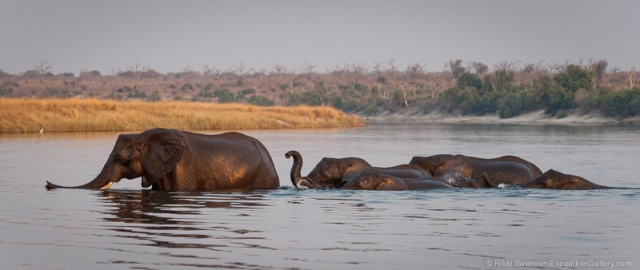
Elephants crossing the Chobe River, Chobe National Park, Botswana.
Moving along the river by boat, we can ease in close to the drinking herds of elephants. We were in plain view, yet completely ignored by them as they drank and bathed, used their trunks to spray themselves with water, then mud and dust. As they “snorkeled” across the deeper waters of the river to feed in the lush grasses on the Namibian side, they raised their trunks high to breathe, then emerged the color of graphite with golden highlights from the setting sun.

A herd emerges from the Chobe River in the bronze evening light, Chobe National Park, Botswana.

Aerial view of a river snaking it’s way through the flooded Okavango Delta, Botswana.
From Chobe, we flew southwest into the wildlife rich Okavango Delta. This is another place where the environment revolves around a river, but here it is the seasonal flow of the Okavango River moving southward from Angola, before spilling out across and into the dry sands of the Kalahari Desert; an inland delta where there is no sea. Yet again, the waters bring life.

Classic view of a leopard at Chitabe Camp, Botswana.
Returning each year to the Delta and to Chitabe Camp is always a highlight of our travels. It’s a splendid and friendly camp with excellent guides, staff, and outstanding wildlife viewing. Like magicians pulling a rabbit out of their hats, our guides began our first game drive by driving barely a half a mile from the camp, and then presenting us with one of the best views imaginable of a leopard lying luxuriously on a tree limb.

Curious cubs in the Okavango Delta, Botswana.
They’d found it there earlier in the day, but the sight of this elegant and unperturbed big cat right in front of us was no less staggeringly wonderful. Only a few hundred yards away from the leopard was a lioness with her small cubs. The following morning we went back to find the lion’s basking in the warm early light, the cubs playing as their mom rested. The leopard had moved off during the night.
Our final location in Botswana was the Mashatu Game Reserve in the country’s less-visited far eastern tip, nestled in a corner near the borders of Zimbabwe and South Africa. We headed this year to Mashatu Tent Camp, and could immediately see how extremely dry the region had become without rain for many months. The game viewing was still quite good, especially for finding big cats with spots.
Our first afternoon we found six cheetahs together; a mom with five nearly full-grown kids. Now this is quite a feat for a cheetah mother, as these cats often lose many of their young to other stronger predators prowling an area.
The following morning, half of the photo group accompanied Jack and a local guide to an underground photographic blind or “hide.” This one had been fabricated using a shipping container with a long slender viewing area cut across it before being sunk in the ground. From inside, our view and cameras were only inches above the ground level, and only a few feet from the edge of a small waterhole.

A fitting frame for an elephant herd, viewed from the underground hide at Mashatu.
Doves and skittish impala arrived to drink, as well as a big male eland that had sadly become entangled in a wire snare (this would be reported to the regional game rangers to hopefully track down, dart, treat, and cut free). Then, arriving almost silently from behind us, came a herd of elephants, quietly shuffling in to drink at the waterhole. Their enormous legs rose like canons from the ground right in front of us, so close that you could nearly reach out and stroke their toenails. When several of them trumpeted, the blaring sound reverberated through the hollow metal container. Young ele’s nuzzled between their mother’s legs to get a drink.

Among giants; an elephant calf lives in a world of trunks and towering legs.
Although we tried to be quiet, we struggled to contain our mirth at this astoundingly close and ground-level view. With our muffled “Wows” and “oh, my Gods,” and our multiple cameras clicking, it was certainly obvious to the elephants that curious sounds were emanating from this strange nearby box. Several of the elephants, at different times, sucked up water and then sprayed it in our direction with their trunks, scattering muddy droplets on our cameras and lenses, while the local guide laughed at our reactions.

Cheetah males attempt to mate with a reluctant female.
During this marvelous encounter, Jack kept wondering and hoping that Rikki and her group were also having a good morning out on their game drive. Well, it turned out that they were having a fantastic time as well. They had relocated the cheetah mom with cubs, who had been joined temporarily by a coalition of three adult males (one presumably the father of the five younger cheetahs) now courting the mother. With these additional three males, the mom, and her five offspring, there were a total of nine cheetahs together, moving around and interacting with each other. The frequent overtures by the male cheetahs sparked defensive flurries of claws and snarls from the female and a few of the juveniles.
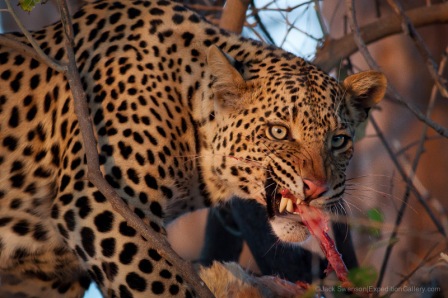
One less impala at Mashatu.

Last year’s sweet little cub is all grown up.
Rikki was clicking her camera again and again, marveling at the scene (nine cheetahs! Wow!).All the while she was wondering and hoping that Jack and his group were having an okay morning sitting in the hide. When we compared notes on our outings, we both laughed as it had been such an exceptional morning for everyone.
All of this delight was only part of the festivities we enjoyed while at Mashatu. We also had several terrific leopard sightings, including finding one of the cubs we’d watched last year, now looking nearly full-grown and munching on an impala he’d just killed. As he ate his meal on a low fallen tree just above our heads, in the final glow of the sun he looked alternately sweet and innocent, and then like a fearsome predator — a cat’s many faces.

Impala drinking at a waterhole by camp.
For the final days of this superb safari we returned to Mala Mala in South Africa. The lodge there felt blissfully lavish after our nights in the bush at the more rustic tented camp. But, typical of all the locations we choose, we were there because of the area’s outstanding wildlife. Mala Mala provided a fitting crescendo, with elephants and rhinos, lions and leopards aplenty, kudus and kingfishers, and even elegant nyala antelope nibbling the flowering bougainvillea around our cottages.
Among the amazing sightings, we had a leopard walk up and lie beside our vehicle to gnaw on the tire. A mother and cub leopard casually strolled by our vehicle countless times, the curious cub reaching up and nearly jumping on the hood.

A leopard cub’s tail drifts past its mom, intent on hunting.
After following them for a while, we pulled away to enjoy a bite of breakfast “in the bush” — which is hardly roughing it with a table cloth, lush spread of food, and hot coffee and tea, etc. Finishing this, we started south, but the road was blocked by a gang of elephants. We got a radio call about lions being found not far away. So we turned around to search for them.

Lions ambushing an impala in Mala Mala Reserve, South Africa.
(That’s one less Mala Mala impala.)
We soon found the lions drinking at a pool by the river, and alternately lying in the shade. Several got up and ambled off into the bush, but with intent, as if stalking. After following them for a while, it became evident that something was afoot, and suddenly several of them darted ahead. A single impala came careening past our vehicle, and at that moment the lions ambushed a second impala only 30 feet away from where we were parked. Almost instantly, eight lions were on top of it in a ferocious mob, growling and gobbling down this hapless antelope that was all but devoured in less than 15 minutes from when it took its last breath. Horns and hooves were all that remained.
The lions, which are so often lovingly rubbing against each other with fondness, were temporarily transformed into snarling and quarreling enemies, lashing out at each other with clubbing paws and lashing claws as they each tried to lay claim to their own piece of the prize. Those cat’s have many faces.

A lioness finds shallow water where the pride’s littlest cubs can safely follow her across the river.
We will return to Southern Africa this September, with great excitement and anticipation of the incredible wildlife experiences we will be sharing with our Photo Safari travelers. With many new itineraries being offered by Lindblad | National Geographic in 2014, at this time we do not expect to be leading a 2014 Southern Africa safari, but do plan to lead another safari there in 2015. Please let us know if you would like to be on the list to hear about that safari. Click here to see our 2014 Expedition & Photo Safari schedule.
This slideshow requires JavaScript.


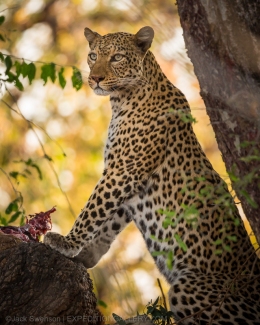






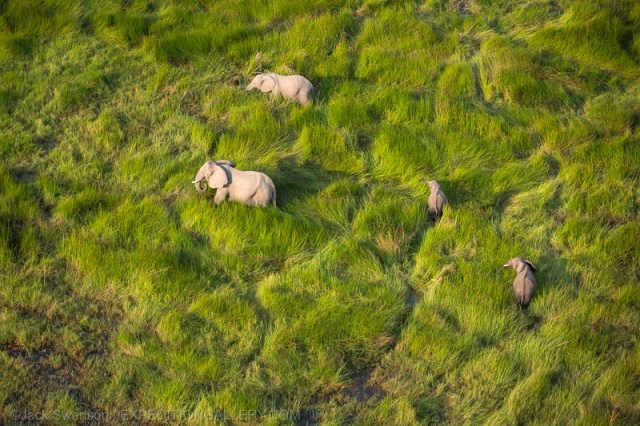



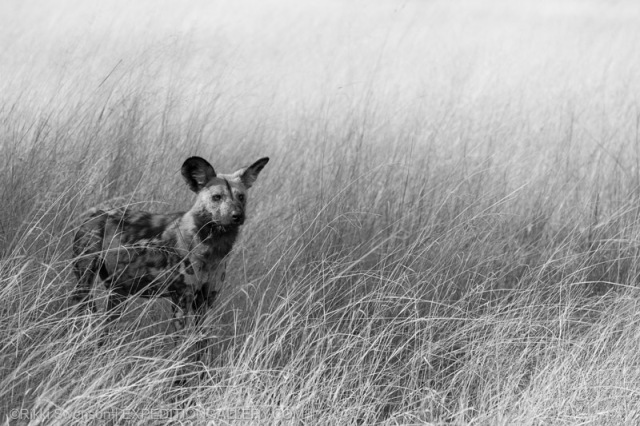





















 We We are often asked where our favorite place is. As anyone who travels widely knows, this is a challenging question to pin down to one place. Rikki would say in a heartbeat, “On safari!” The season, in some cases the month, is crucial to the exact “where.” It’s telling to note that during our northern winter, in late January, we returned again for a personal “vacation” at a most favorite tented camp in Africa — Little Governors’, in Kenya’s Maasai Mara.
We We are often asked where our favorite place is. As anyone who travels widely knows, this is a challenging question to pin down to one place. Rikki would say in a heartbeat, “On safari!” The season, in some cases the month, is crucial to the exact “where.” It’s telling to note that during our northern winter, in late January, we returned again for a personal “vacation” at a most favorite tented camp in Africa — Little Governors’, in Kenya’s Maasai Mara. This year was fantastic — lingering with lion cubs; watching the dynamics within a group of six big male lions; cheetahs hunting; and the rewards of tracking leopard in beautiful late light. The seemingly endless plains are peppered with wildlife — giraffe, gazelles, zebras, topi, wildebeest, eland — always plenty to see, plus surprises like finding aardwolf.
This year was fantastic — lingering with lion cubs; watching the dynamics within a group of six big male lions; cheetahs hunting; and the rewards of tracking leopard in beautiful late light. The seemingly endless plains are peppered with wildlife — giraffe, gazelles, zebras, topi, wildebeest, eland — always plenty to see, plus surprises like finding aardwolf. Refreshed, we set off to lead our 13th annual East Africa Photo Safari. Two weeks later we returned to the “Mara” with our enthused safari travelers to share this “favorite place” with them. They were not disappointed! Like most tented camps on our itinerary, wildlife moves freely through the camp. Bordering a permanent marsh, elephants trundle through in the daytime, warthogs casually munch grasses beside our lunch tables, and hippos grunt and snort through the night. There is a classic safari charm to this experience, an intimacy with the landscape. (We’ve redesigned our
Refreshed, we set off to lead our 13th annual East Africa Photo Safari. Two weeks later we returned to the “Mara” with our enthused safari travelers to share this “favorite place” with them. They were not disappointed! Like most tented camps on our itinerary, wildlife moves freely through the camp. Bordering a permanent marsh, elephants trundle through in the daytime, warthogs casually munch grasses beside our lunch tables, and hippos grunt and snort through the night. There is a classic safari charm to this experience, an intimacy with the landscape. (We’ve redesigned our  The Mara is but a small part of the incredible Serengeti Plains ecosystem — the enormous and continuous grasslands stretching across a huge swath of Tanzania up into Kenya. It’s not just the millions of wildebeest and hundreds of thousands of zebra and Thomson’s gazelles, the core of the “Great Migration,” that draw us here. A full array of wildlife, from elephants to dwarf mongoose, are found among the plains, woodlands, and granite kopjes. All this game supports healthy lion populations, excellent cheetah sightings, and many sly leopards.
The Mara is but a small part of the incredible Serengeti Plains ecosystem — the enormous and continuous grasslands stretching across a huge swath of Tanzania up into Kenya. It’s not just the millions of wildebeest and hundreds of thousands of zebra and Thomson’s gazelles, the core of the “Great Migration,” that draw us here. A full array of wildlife, from elephants to dwarf mongoose, are found among the plains, woodlands, and granite kopjes. All this game supports healthy lion populations, excellent cheetah sightings, and many sly leopards.
 The month of February is significant as we head into the southern plains, the heart of the Serengeti. The great herds of wildebeest are now congregating in the short-grasses at the peak of their calving season. Thousands of new babies are being born in this region. Newborn gazelles tenuously struggle to stand on wobbly legs, soon to be energetically bouncing about. Migrant zebra herds are here with their perky foals typically a mere month or two old. We scan the plains, always looking for what’s next. A vulture circles overhead, swooping down to grab some unidentified
The month of February is significant as we head into the southern plains, the heart of the Serengeti. The great herds of wildebeest are now congregating in the short-grasses at the peak of their calving season. Thousands of new babies are being born in this region. Newborn gazelles tenuously struggle to stand on wobbly legs, soon to be energetically bouncing about. Migrant zebra herds are here with their perky foals typically a mere month or two old. We scan the plains, always looking for what’s next. A vulture circles overhead, swooping down to grab some unidentified 
 What is so amazing about being on safari in Africa is this constant grand theater playing out across epic landscapes where unscripted performances are given daily by the world’s best known animals; zebras, cheetahs, hippos, rhinos, lions, elephants, giraffes, leopards, crocodiles, and myriad different species of other antelopes and birds.
What is so amazing about being on safari in Africa is this constant grand theater playing out across epic landscapes where unscripted performances are given daily by the world’s best known animals; zebras, cheetahs, hippos, rhinos, lions, elephants, giraffes, leopards, crocodiles, and myriad different species of other antelopes and birds.





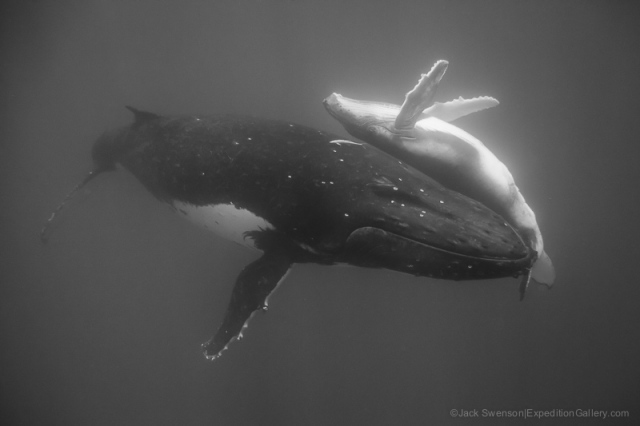


















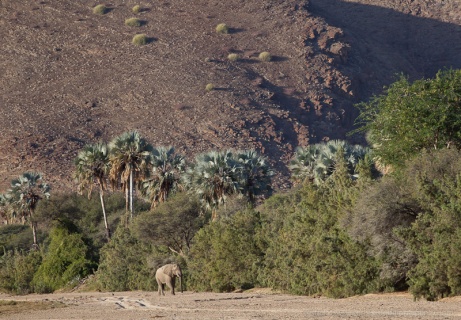

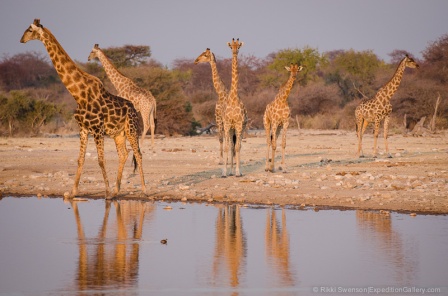


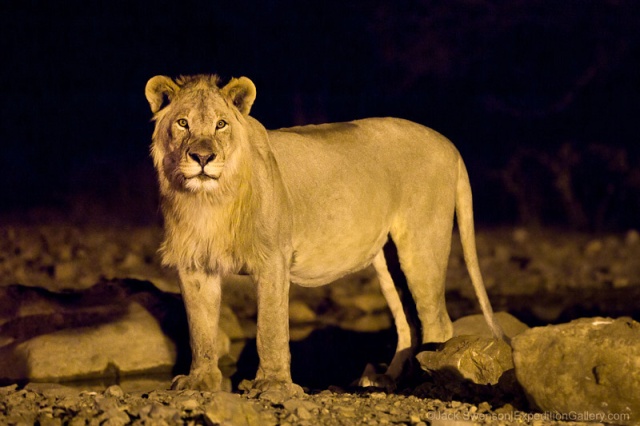


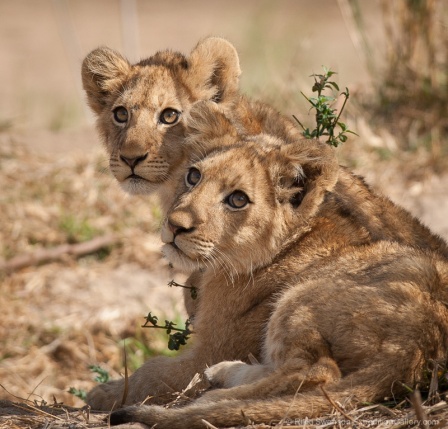






![Woman and child in dugout canoe, Ganvie Village, Benin. [NO MODEL RELEASE]](https://expeditiongallery.files.wordpress.com/2013/01/120411_wafr_7675.jpg?w=415&h=225)


![Children in classroom at Obaa's School, Monrovia, Liberia. [NO MODEL RELEASE]](https://expeditiongallery.files.wordpress.com/2013/01/120417_wafr_1531.jpg?w=358&h=239)


![Exuberant children posing for photos, Goree Island, Senegal. [NO MODEL RELEASE]](https://expeditiongallery.files.wordpress.com/2013/01/120421_wafr_3584.jpg?w=403&h=308)

















